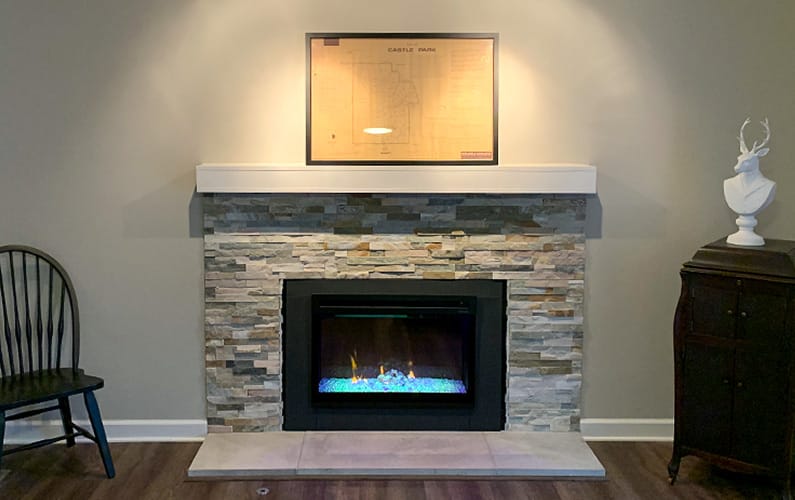Fireplaces have long been cherished for their ability to provide warmth, comfort, and a focal point in homes. Whether you’re renovating, building new, or simply upgrading your current space, understanding the various types of fireplaces available can help you choose the perfect one to suit your needs and style. Here’s an in-depth look at the different types of fireplaces and their unique characteristics.
Wood-Burning Fireplaces
The traditional wood-burning fireplace evokes a sense of nostalgia and classic charm. It consists of a firebox, a chimney, and often a mantel. There are two main types: open hearth and enclosed fireplaces. Open hearth fireplaces provide a real wood-burning experience but are less efficient at heating a room. Enclosed fireplaces, with glass doors that can be closed, increase heating efficiency while still allowing you to enjoy the view of the flames. The authentic crackling fire and natural heat make wood-burning fireplaces ideal for homes with access to a wood supply.
Gas Fireplaces
Gas fireplaces offer a convenient and clean-burning alternative to wood. They can be connected to a natural gas line or use propane tanks. There are direct-vent and vent-free types. Direct-vent fireplaces vent directly outside, using outside air for combustion and reducing heat loss. Vent-free fireplaces use indoor air for combustion and don’t require a chimney or flue, making them easier to install. Gas fireplaces are easy to start and control with a switch or remote, and they are low maintenance and cleaner than wood-burning options.
Electric Fireplaces
Electric fireplaces are highly versatile and can be installed in virtually any room. They use electricity to create a flame effect and provide heat through a built-in heater. Wall-mounted electric fireplaces can be mounted on any wall, similar to a flat-screen TV, while freestanding units are portable and can be moved from room to room. Electric fireplaces offer easy installation and relocation, making them safe for apartments and rental properties, with no emissions or need for venting.
Ethanol Fireplaces
Ethanol fireplaces burn bioethanol, a renewable and clean-burning fuel. They do not require a chimney or vent, making them a flexible option. Tabletop ethanol fireplaces are small, portable units that can be placed on tables or countertops, while wall-mounted models can be mounted on walls. Ethanol fireplaces are eco-friendly with no smoke or ash, and they offer easy installation and modern design. If this is the option for your home, Stonewoods provide bio ethanol fireplaces for London.
Pellet Stoves
Pellet stoves burn compressed wood or biomass pellets. They are efficient and environmentally friendly, often used as an alternative to traditional wood-burning fireplaces. There are freestanding pellet stoves that can be placed anywhere in the room, and insertable models that fit into an existing fireplace opening. Pellet stoves are highly efficient, with low emissions and use renewable fuel sources.
Hybrid Fireplaces
Hybrid fireplaces combine features of different types, such as wood and gas, to offer flexibility and efficiency. Dual-fuel hybrid fireplaces can switch between gas and wood, while multi-fuel models can burn a variety of fuels, such as wood, pellets, and coal. Hybrid fireplaces offer flexibility in fuel choices and can maximize efficiency and convenience.
Conclusion
Choosing the right fireplace for your home depends on your specific needs, preferences, and the layout of your living space. By understanding the unique characteristics of each type of fireplace, you can make an informed decision that enhances the warmth and ambiance of your home. Whether you prioritize ease of use, environmental impact, or aesthetic appeal, there is a fireplace type that will perfectly complement your living space.




